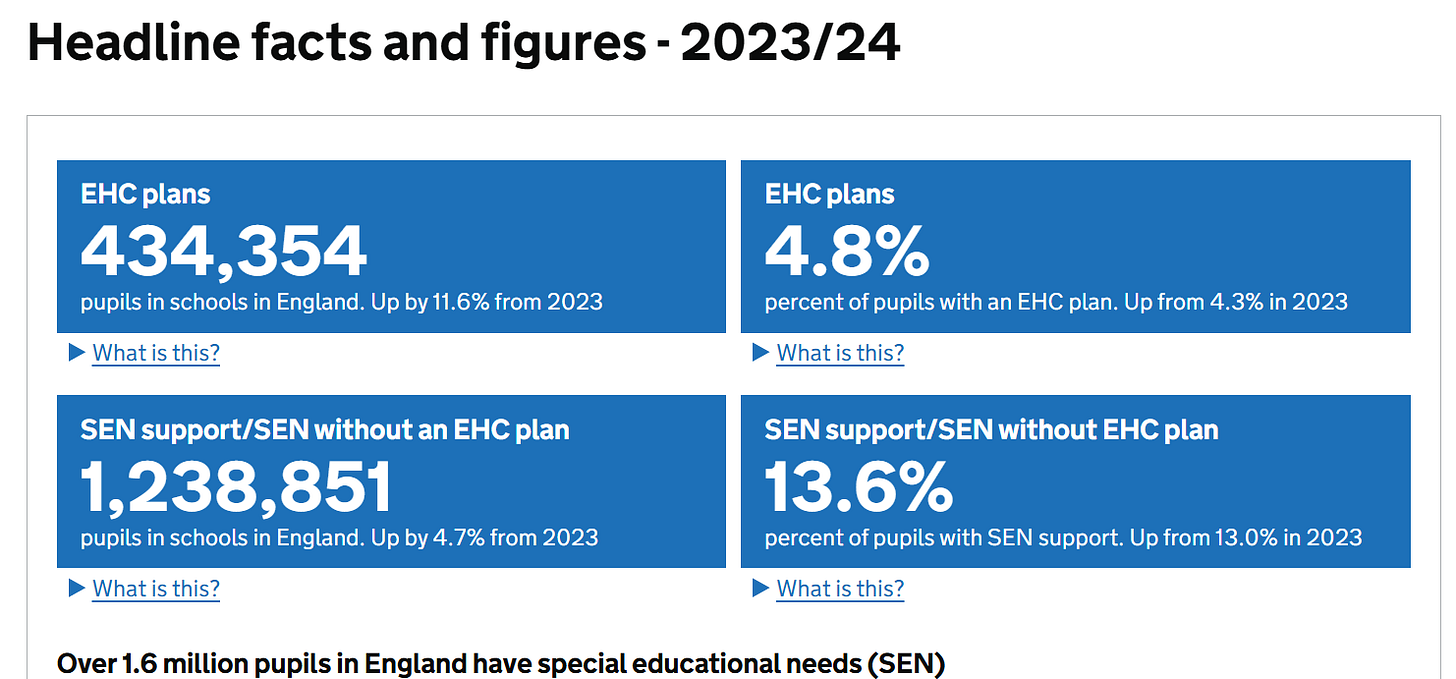Increasing Levels of Need Within Mainstream Education Settings
What can school staff do to cope with the increasing level of need?
In recent education news, there has been growing concern regarding the increasing number of children and young people (CYP) with high levels of needs in mainstream schools. These needs include; anxiety, depression, ADHD, trauma, Autism and Social Emotional & Mental Health needs, all of which can significantly affect a student's ability to succeed both academically and socially in a traditional classroom environment.
The following images are taken from the UK Government website about SEN and
As you can see, there’s been an increase in suspensions, exclusions and Special Educational Needs.
The Main Issue 🏫
Mainstream schools have historically been structured to support a broad range of students, with a primary focus on academic achievement. However, as our understanding of needs deepens, such as SEMH, SEN and Trauma, it is clear that a one-size-fits-all approach to education may no longer be sufficient. These needs are not an isolated concern affecting a few students; rather, they are becoming increasingly prevalent and demand dedicated attention and support.
So What? 🤷
This raises an important question: how much longer can we depend on the current mainstream school model to meet the diverse needs of all students? It is crucial to acknowledge that mainstream schools may not be the ideal environment for every student, especially those with complex SEMH challenges. While some schools have successfully implemented support systems, resources, and tailored strategies, many others are not equipped to address these needs effectively.
A major challenge lies in the large class sizes and limited resources typical of mainstream schools. With the focus often placed on academic targets and desirable behaviour, students with additional needs can easily be overlooked. These students may struggle with emotional regulation, forming positive relationships, and engaging with the curriculum, resulting in an educational experience that leaves them falling behind their peers.
This highlights the urgent need for schools to better support children and young people with additional needs. A more inclusive educational landscape is required, one that recognises and responds to the diverse needs of all students. This does not mean abandoning mainstream schools but rather transforming them into environments where every student can flourish, regardless of their level of need.
What can be done?
To achieve this, several key steps are necessary. Schools must be provided with adequate resources, including trained staff, to effectively identify and support students with additional needs. This could involve increasing the number of teaching assistants, school counsellors, and mental health professionals to offer targeted interventions and individualised support. Additionally, staff training and professional development programs are essential to equip teachers with the skills needed to address additional needs comprehensively.
Moreover, schools must adopt a holistic approach to education, one that values emotional well-being as highly as academic success. This means creating safe, inclusive environments where students feel supported, valued, and understood. It also requires fostering strong communication and collaboration between staff, students, and parents to ensure that everyone is working together toward the student's well-being and academic progress.
Although these changes may appear challenging, they are necessary to ensure that every student has the opportunity to reach their full potential. By embracing inclusive practices and providing the necessary support for additional needs, we can build a more compassionate and effective educational system.
Final Thoughts 🧠
In conclusion, the rise in the number of students with additional needs in mainstream education demands immediate attention and action. We must recognise that the current mainstream school model may not be adequately equipped to support all students. It is time to rethink our educational approach, investing in the resources, training, and holistic practices needed to meet the diverse needs of our students. By doing so, we can empower every child and young person to thrive academically, socially, and emotionally, making a meaningful difference in their lives.





